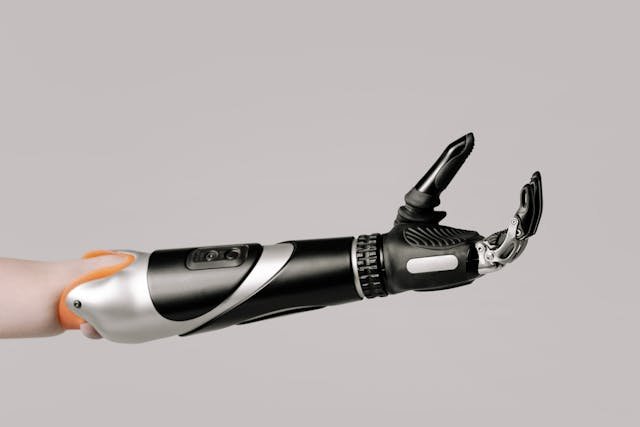For trans-radial prosthetic users, gripping power is one of the most important factors in choosing the right prosthetic hand. A strong, functional grip allows users to hold objects securely, perform daily activities with ease, and regain independence. However, not all prosthetic hands offer the same level of grip strength or versatility.
Different prosthetic hand designs vary in how they grip, hold, and manipulate objects. Some provide powerful, steady grips for lifting heavy items, while others focus on dexterity and precision for delicate tasks like using a pen or handling small objects. Understanding the differences between these hand designs helps users choose the best option for their lifestyle, work, and personal needs.
In this article, we will compare different types of prosthetic hands based on their gripping power, control, and real-world functionality. Whether you need a strong, durable grip or precise fine motor control, this guide will help you make an informed decision.
Understanding Gripping Power in Prosthetic Hands
Gripping power is more than just how strong a prosthetic hand is—it also involves grip stability, control, and adaptability. Choosing the right hand depends on how force, motion, and functionality are balanced.
What Makes a Good Prosthetic Grip?
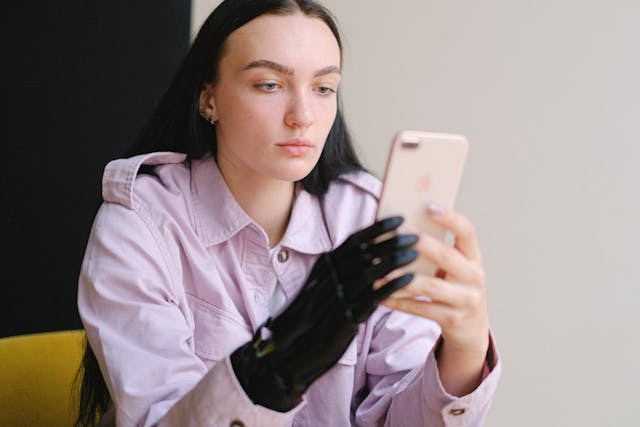
A prosthetic hand should be able to hold objects firmly without slipping while also allowing for smooth, controlled movement. Good gripping power means that users can confidently carry objects, perform fine motor tasks, and interact naturally with their environment.
A strong grip doesn’t always mean a tight grip. It should be adaptive, allowing users to adjust pressure depending on the task. For example, a good prosthetic grip should be able to firmly hold a heavy bag while also being gentle enough to grip a fragile object without crushing it.
Grip types also matter. Some prosthetic hands only open and close, while others offer multiple grip patterns for different tasks. Advanced hands allow users to switch between power grip, pinch grip, lateral grip, and precision grip, making them more versatile.
Factors That Affect Prosthetic Grip Strength
Several factors determine how well a prosthetic hand grips objects. The power source—whether it’s body-powered or myoelectric—plays a major role in grip force. Body-powered prosthetics use shoulder or upper-body movement to create gripping force, while myoelectric prosthetics use electrical signals from muscles to control the grip.
The materials and mechanics of the prosthetic hand also influence grip strength. Metal and carbon fiber hands provide stronger, more stable grips, while lighter, flexible designs offer better adaptability but may have weaker holding power.
Finally, the grip mechanism itself determines how well a hand holds objects. Some prosthetic hands use friction-based grips, while others rely on adaptive fingers that conform to the object’s shape, creating a more secure hold.
The Role of User Training in Grip Performance
Even the most advanced prosthetic hand needs proper training and adaptation for optimal gripping power. Users must learn how to control grip force, adjust wrist positioning, and switch between grip patterns for different tasks.
Rehabilitation and daily practice help users improve grip coordination, making their prosthetic feel more natural and responsive. Over time, users develop muscle memory and confidence, allowing them to grip objects more efficiently without excessive effort.
Comparing Different Prosthetic Hand Designs
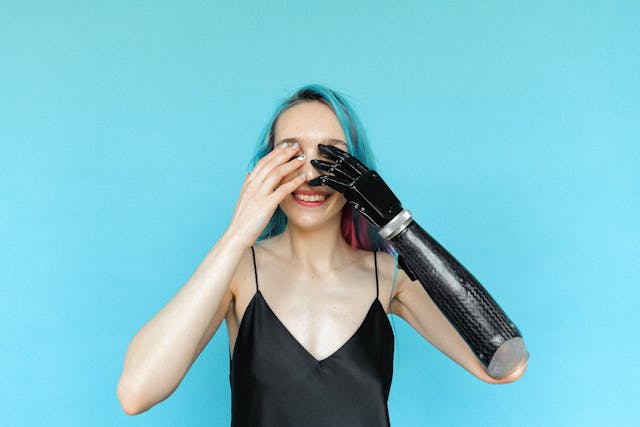
There are several types of prosthetic hands, each offering different levels of grip strength, control, and usability. Choosing the right one depends on a user’s daily activities, work, and personal needs.
Body-Powered Prosthetic Hands: Strength and Durability
Body-powered prosthetic hands use a cable and harness system to create gripping force. When the user moves their shoulder or upper arm, the cable tightens, pulling the fingers closed. These hands are simple, durable, and effective for basic gripping tasks.
One of the biggest advantages of body-powered hands is their strong, reliable grip. Because they use direct mechanical force, they provide a firm, controlled hold that can lift heavier objects. This makes them ideal for users who engage in physical work, outdoor activities, or tasks that require a strong grip.
However, body-powered prosthetics can be physically demanding. Since they rely on upper-body movement, prolonged use can cause fatigue and muscle strain. Additionally, most body-powered hands have a single grip pattern, limiting their adaptability for fine motor tasks or delicate object handling.
Myoelectric Prosthetic Hands: Precision and Adaptability
Myoelectric prosthetic hands are controlled using electrical signals from the user’s residual limb muscles. These advanced hands allow for multiple grip patterns, offering more natural and intuitive control.
Myoelectric hands excel in precision and adaptability. They can switch between power grips for lifting heavy objects and delicate grips for handling fragile items. This makes them ideal for office work, daily household tasks, and social interactions where fine motor control is needed.
One limitation of myoelectric hands is their dependence on battery power. If the battery runs out, the prosthetic becomes non-functional until recharged. Additionally, while grip strength is adjustable, it may not be as strong or durable as a body-powered prosthetic for heavy-duty activities.
Hybrid Prosthetic Hands: Combining Strength and Precision
For users who need both strength and adaptability, hybrid prosthetic hands combine body-powered and myoelectric technology. These hands allow users to manually control gripping force while also using muscle signals for finer adjustments.
Hybrid designs offer the best of both worlds, providing strong gripping power for heavy objects and precise control for delicate tasks. They are particularly useful for users who need a versatile prosthetic that can handle a wide range of activities without requiring excessive effort.
However, hybrid hands can be more complex to use. Since they involve multiple control mechanisms, users may need extensive training to master both body-powered and myoelectric functions effectively.
Choosing the Right Prosthetic Hand for Your Needs
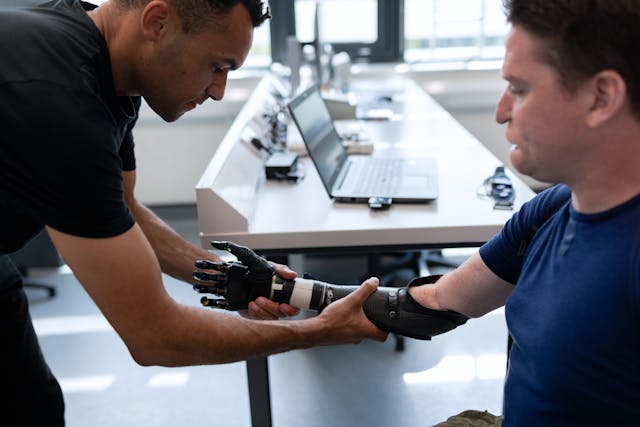
Selecting the right prosthetic hand depends on lifestyle, work demands, and daily activities. Understanding how different hands function helps users match their needs to the best available design.
For Users Who Need Strength and Durability
If you require a strong grip for heavy lifting, outdoor work, or manual labor, a body-powered prosthetic hand is the best option. These hands offer reliable grip strength and durability, making them ideal for physically demanding tasks.
For Users Who Need Precision and Adaptability
If your daily tasks involve writing, typing, handling small objects, or interacting in social environments, a myoelectric hand is the better choice. These hands provide multiple grip modes, allowing for better fine motor control and natural movement.
For Users Who Need a Balance of Strength and Precision
If you need both gripping power and fine motor control, a hybrid prosthetic hand offers the most flexibility. These hands allow users to switch between strong, stable grips and precision-based movements, making them suitable for a wide variety of tasks.
Enhancing Gripping Power Through Training and Adaptation
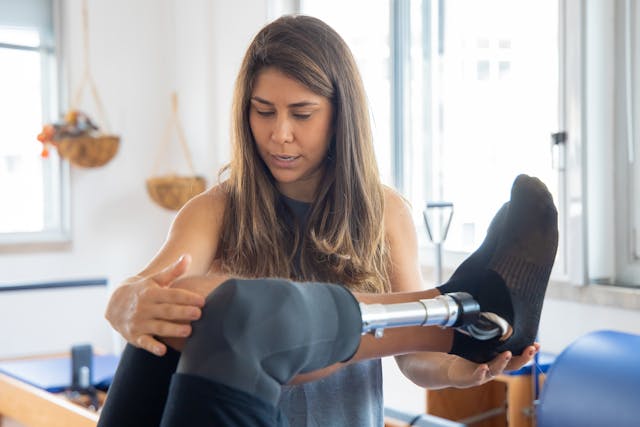
While selecting the right prosthetic hand is important, gripping power also depends on proper training and adaptation. Even the most advanced prosthetic hand requires practice, muscle coordination, and technique refinement to achieve optimal grip strength and control.
Building Strength in the Residual Limb
For users of myoelectric prosthetics, grip strength is determined by muscle signals from the residual limb. If the muscles are weak or underdeveloped, the prosthetic may not receive strong or consistent signals, leading to weaker grip performance.
To improve muscle strength, rehabilitation exercises focus on residual limb movement, wrist flexion, and grip training. Simple exercises like squeezing a soft stress ball, flexing the forearm, or performing resistance training can help strengthen the necessary muscles for more precise prosthetic control.
For body-powered prosthetic users, upper-body strength is also crucial. Since these prosthetics rely on shoulder and arm movement, exercises that strengthen the shoulders, back, and upper arms can help reduce fatigue and improve grip force.
Improving Grip Coordination and Response Time
Many new prosthetic users find it difficult to judge grip pressure when handling objects. It takes time to develop the coordination needed to apply the right amount of force for different tasks.
Practicing with objects of various weights, sizes, and textures can help improve grip sensitivity. Users should start with lightweight objects and gradually progress to heavier or more fragile items. Over time, this builds confidence and fine motor control, reducing the chances of dropping or crushing objects.
For myoelectric users, practicing slow, deliberate muscle contractions helps refine signal strength and grip transitions. Biofeedback training, where users watch real-time muscle signal feedback, can also help fine-tune control.
Adapting to Real-Life Situations
Once basic grip control is developed, the next step is integrating the prosthetic into daily life. Many users experience hesitation in public settings, particularly in activities like eating, shaking hands, or using tools. The more a prosthetic is used in real-world situations, the more natural it will feel.
Practicing real-life tasks in a controlled environment—such as picking up utensils, holding a phone, or opening doors—can help bridge the gap between training and everyday use. Over time, users gain the confidence to use their prosthetic effortlessly in any situation.
At Robobionics, we offer personalized training programs to help users master their grip strength, improve fine motor skills, and integrate their prosthetic into daily life. If you need assistance in enhancing your grip power, contact us today for expert guidance. Let us help you maximize the potential of your prosthetic hand so you can enjoy greater independence and mobility.
The Future of Prosthetic Grip Technology: Innovations on the Horizon
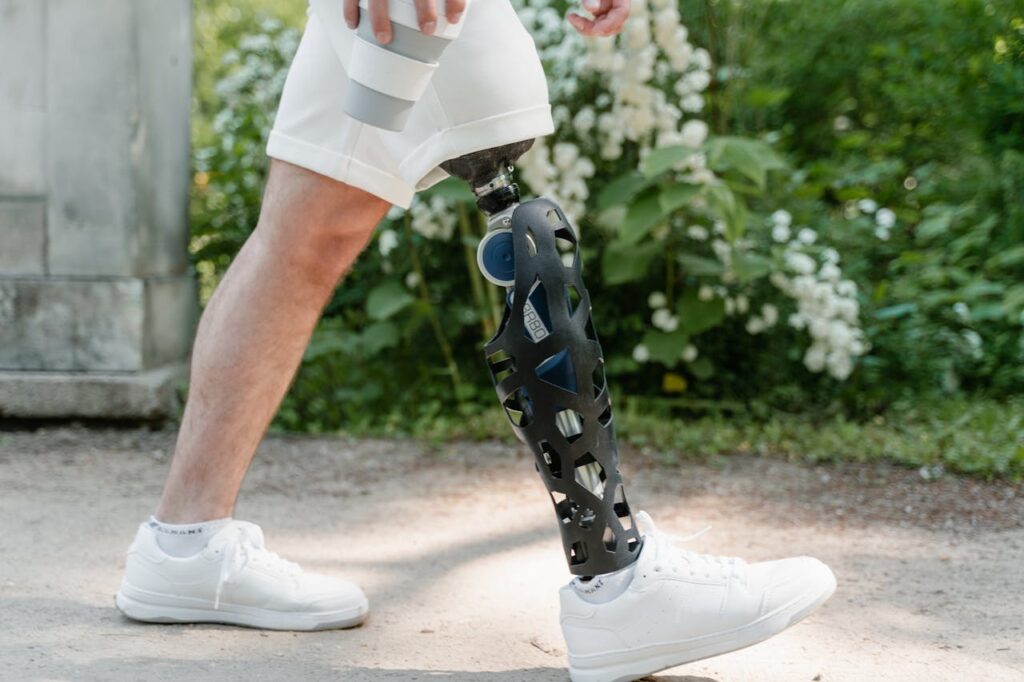
As prosthetic technology advances, grip strength, precision, and adaptability are improving rapidly. Engineers and researchers are developing smarter, more responsive prosthetic hands that offer users greater control, enhanced feedback, and improved functionality.
AI-Driven Smart Prosthetics for Adaptive Grip Control
One of the most promising innovations in prosthetic grip technology is artificial intelligence (AI)-driven control systems. These systems use machine learning algorithms to analyze a user’s muscle signals, movement patterns, and grip preferences over time.
With AI integration, a prosthetic hand can automatically adjust grip strength based on the object being held. For example, if a user picks up a fragile glass, the AI system detects the need for a gentle grip, whereas for a heavy bag, it applies a firm, stable hold. This eliminates the need for users to manually adjust grip pressure, making everyday tasks more intuitive and effortless.
In addition, AI-powered prosthetics are becoming more predictive. By learning a user’s daily habits and activities, the prosthetic can anticipate movements and respond faster and more accurately, significantly improving reaction speed and usability.
Haptic Feedback: Restoring the Sense of Touch
A major challenge with prosthetic hands is the lack of sensory feedback. Currently, most users must visually monitor their grip, as they cannot feel the amount of pressure applied. However, new prosthetic designs are incorporating haptic feedback technology to simulate the sense of touch.
Haptic sensors embedded in prosthetic fingertips can detect pressure, texture, and temperature. These sensors send signals to the nervous system or remaining limb, allowing users to “feel” what they are holding. This breakthrough makes it easier to handle fragile objects, adjust grip force, and interact more naturally with the environment.
Haptic-enabled prosthetics are already in early testing phases and are expected to redefine prosthetic gripping power in the coming years. Soon, users may experience a much closer connection between their prosthetic hand and their sense of touch.
Lightweight, High-Strength Materials for Improved Grip Durability
Future prosthetic hands will also benefit from advanced materials that improve strength, durability, and comfort. Researchers are developing ultra-lightweight carbon fiber, graphene-reinforced polymers, and self-healing materials that make prosthetic hands stronger yet lighter.
These materials enhance grip stability and durability, ensuring that prosthetic hands can withstand heavy-duty use without wear and tear. Additionally, self-healing coatings may soon allow prosthetic hands to automatically repair minor surface damage, reducing maintenance needs and extending their lifespan.
At Robobionics, we are committed to integrating the latest grip-enhancing technologies into our prosthetic designs. If you are interested in cutting-edge prosthetic solutions that offer superior grip strength and control, contact us today for a consultation. The future of advanced gripping power is here, and we are excited to help you experience it firsthand.
Personalizing Your Prosthetic Grip for Maximum Efficiency

Every prosthetic user has unique needs based on their daily routines, work demands, and personal preferences. While choosing the right prosthetic hand is crucial, personalizing its grip strength and functionality can enhance usability and comfort. Custom adjustments allow users to fine-tune their grip, improve performance, and reduce strain, making their prosthetic feel more like a natural part of their body.
Customizing Grip Strength for Different Activities
Not all tasks require the same grip pressure. Holding a coffee mug requires a gentle, controlled grip, while lifting a heavy grocery bag needs a stronger, more stable hold. Some prosthetic hands allow users to manually adjust grip force, while advanced myoelectric models automatically sense object weight and texture to fine-tune grip strength.
For manual adjustments, users can practice grip training exercises with different objects to learn how much pressure is needed for each task. For AI-assisted prosthetics, calibration settings can be adjusted through mobile apps or onboard controls, ensuring that grip strength matches the user’s specific needs.
Over time, users develop muscle memory and instinctive control, making it easier to perform tasks without consciously thinking about grip adjustments. A well-calibrated prosthetic reduces fatigue, accidental slips, or excessive strain, leading to a more seamless experience.
Adapting Grip Patterns for Specific Professions and Hobbies
Different jobs and hobbies require specialized grip functions. A chef needs precise finger control for chopping and slicing, while an engineer may require a steady grip for handling tools and machinery. Similarly, musicians, athletes, and artists all have unique prosthetic grip requirements that must be tailored to their field.
Myoelectric prosthetics with programmable grip modes allow users to switch between different grip patterns depending on the activity. Users can program grips for typing, playing an instrument, lifting gym equipment, or even handling delicate laboratory instruments.
For those in physically demanding jobs, grip reinforcement can be added through non-slip coatings, stronger grip treads, or shock-absorbing materials. These modifications enhance durability and precision, ensuring that the prosthetic hand performs optimally in any setting.
Enhancing Comfort and Fit for Long-Term Use
Even with a strong and functional grip, a poorly fitted prosthetic can cause discomfort, pressure sores, and reduced efficiency. Proper socket design, liner materials, and weight distribution all play a role in ensuring comfortable, extended prosthetic wear.
Some users benefit from custom-fitted silicone liners, which reduce friction and improve grip control by ensuring a snug, cushioned fit. Adjustable wrist rotation features can also prevent unnatural strain when performing repetitive tasks.
Regular fit assessments with a prosthetist help ensure that the prosthetic remains comfortable and effective, especially as the residual limb changes shape over time. These adjustments allow users to maintain strong, controlled grip function without discomfort.
At Robobionics, we specialize in personalized prosthetic grip solutions to match individual user needs. Whether you need a customized grip for work, hobbies, or daily life, we provide expert modifications and training to help you maximize your prosthetic’s potential. Contact us today to explore grip-enhancing options tailored to your lifestyle.
Conclusion: Finding the Best Prosthetic Grip for You
Gripping power is one of the most important factors in choosing a trans-radial prosthetic hand. Whether you need strength, precision, or a combination of both, understanding different hand designs helps you select the best option for your lifestyle.
At Robobionics, we specialize in custom prosthetic solutions that offer optimal grip strength, control, and comfort. If you are looking for a prosthetic hand that fits your needs, contact us today for a consultation. Let us help you find the perfect prosthetic that enhances your mobility, confidence, and independence.



